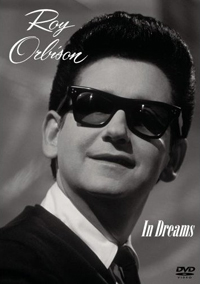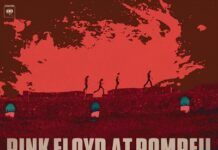There is little doubt that Roy Orbison was one of the reigning pioneers of
rock and roll. Yet, the enigmatic singer who crooned about dreaming, loneliness
and pretty women endured a series of lulls, hardships and personal tragedy that
would have driven lesser men over the edge. The pain and anguish came through
in his music — an unmistakable sound that transcended time and space,
never to lose its alluring elegance in an ever-changing musical landscape. Now,
18 years after his untimely demise at age 52, Roy Orbison’s story has
been brought to life on DVD with In Dreams, a 90-minute documentary
that chronicles the legendary musician’s life with surefire accuracy and
praiseworthy pageantry.
Executive produced by Barbara Orbison, In Dreams takes the
viewer on a fascinating journey with more than its share of sky highs and dangerous
curves. We learn about the singer’s humble origins in Texas with the Wink
Westerners. This lead him to Johnny Cash, who’s featured in some older
footage, tooting his admiration for Orbison, which lead him to Sun Records,
home of Cash, Elvis Presley, and Jerry Lee Lewis. Despite moderate success with
the label, which issued his first hit “Ooby Doobie,” Orbison jumped
ship and was signed to RCA by guitarist Chet Atkins. But the courtship was short-lived,
and soon Orbison found himself under contract to a small label called Monument
Records. The label’s co-owner Fred Foster was instrumental in Orbison’s
development and bears a large presence in the film. He recounts how “Only
The Lonely” came together, becoming Orbison’s first major hit. From
there, his star began to rise and the door swings open with testimonials from
some of music’s mightiest makers, including Bruce Springsteen, Robert
Plant, and even Martin Sheen.
U2’s Bono, who would write “She’s A Mystery To Me” for the
singer in the late 80s, explains how Orbison talked him through life on “Running
Scared,” his first Number One record from 1961. Orbison went on to exude
his commanding, emotive voice — “the voice of God,” as Bee
Gee Barry Gibb put it — on “Crying,” “Dream Baby,”
“Pretty Woman,” and “It’s Over.” Along the way, he toured
with the Beatles in England and the Rolling Stones in Australia. Former Stones
bassist Bill Wyman talks at length about Orbison’s humor and gentle manner
duirng the trek down under. Throughout the 60s and 70s, while sales of his records
dipped, Orbison continued to work. He also suffered the tragic loss of his wife
Claudette in a motocycle accident, Two years later, a fire at his home would
claim the lives of his two young sons. Somehow, Orbison kept a stiff upper lip
and carried on. “Time takes care of things,” he said during an interview.
In the 80s, a new found respect and admiration for Roy Orbison took hold. He
dueted with Emmylou Harris (who says Orbison sang in the living room of a house
she wished she hadn’t sold) on “That Lovin’ You Feelin’ Again”
and went on win a 1981 Grammy Award for Best Country Performance by a Duo or
Group with Vocal. In 1986, Orbison’s chilling “In Dreams” made
an propitious appearance in the David Lynch film Blue Velvet. Then
in 1987, he was inducted into the Rock And Roll Hall Of Fame by Springsteen.
All of these events turned Orbison into a hot commodity and he signed a deal
with Virgin Records. Furst up, he re-recorded “Crying” as a duet with
k.d. lang and won another Grammy. Not a bad to start at all. Things began to
snowball from there.
Roy Orbison And Friends, A Black And White Night, an all-star tribute
to Orbison was filmed in 1988, exposed the singer to a whole new audience. Interspersed
throughout the documentary, the show featured stellar versions of all the big
hits, accompanied by such admirers as Springsteen, Elvis Costello, Tom Waits,
Bonnie Raitt, and many others. Then Orbison hooked up with Jeff Lynne, Tom Petty,
Bono and the Edge to record Mystery Girl, an album he wouldn’t
live to see released (It would make the Top 10 in 1989). But before the singer
left the stage, he became a charter member of an exclusive club called the Traveling
Wilburys, a supergroup that also featured Lynne, Petty, George Harrison and
Bob Dylan. As sad as it is that Orbison passed away right around the time his
career was taking off for a second time, one can’t help but feel blessed
for what he accomplished and left behind. Friends, admirers, road managers,
publicists and assorted associates all weigh in. They each share a common bond:
a true love for Roy Orbison as a musician and a man whose resilience underscores
the beauty and wonder behind In Dreams.
~ Shawn Perry




















